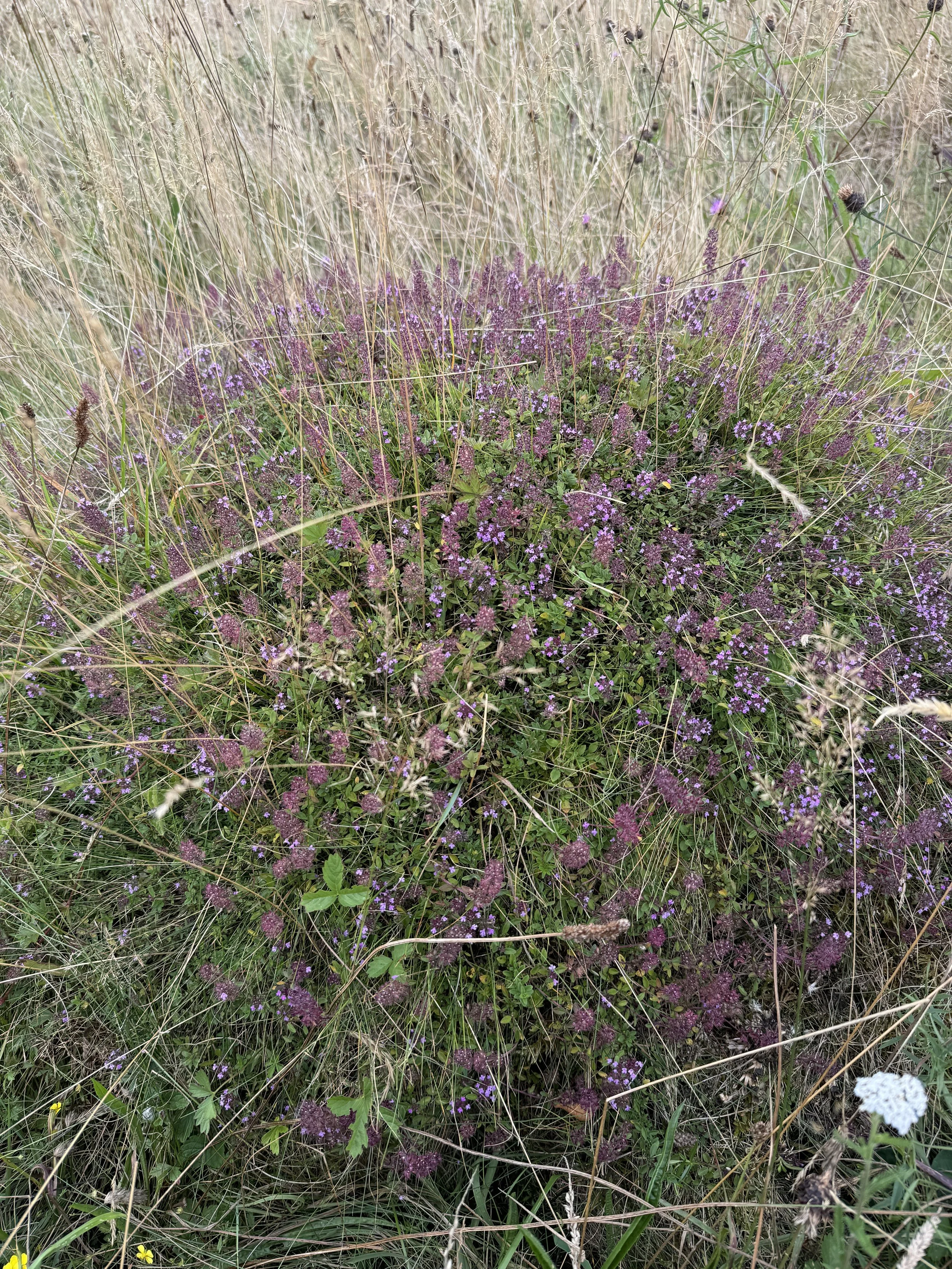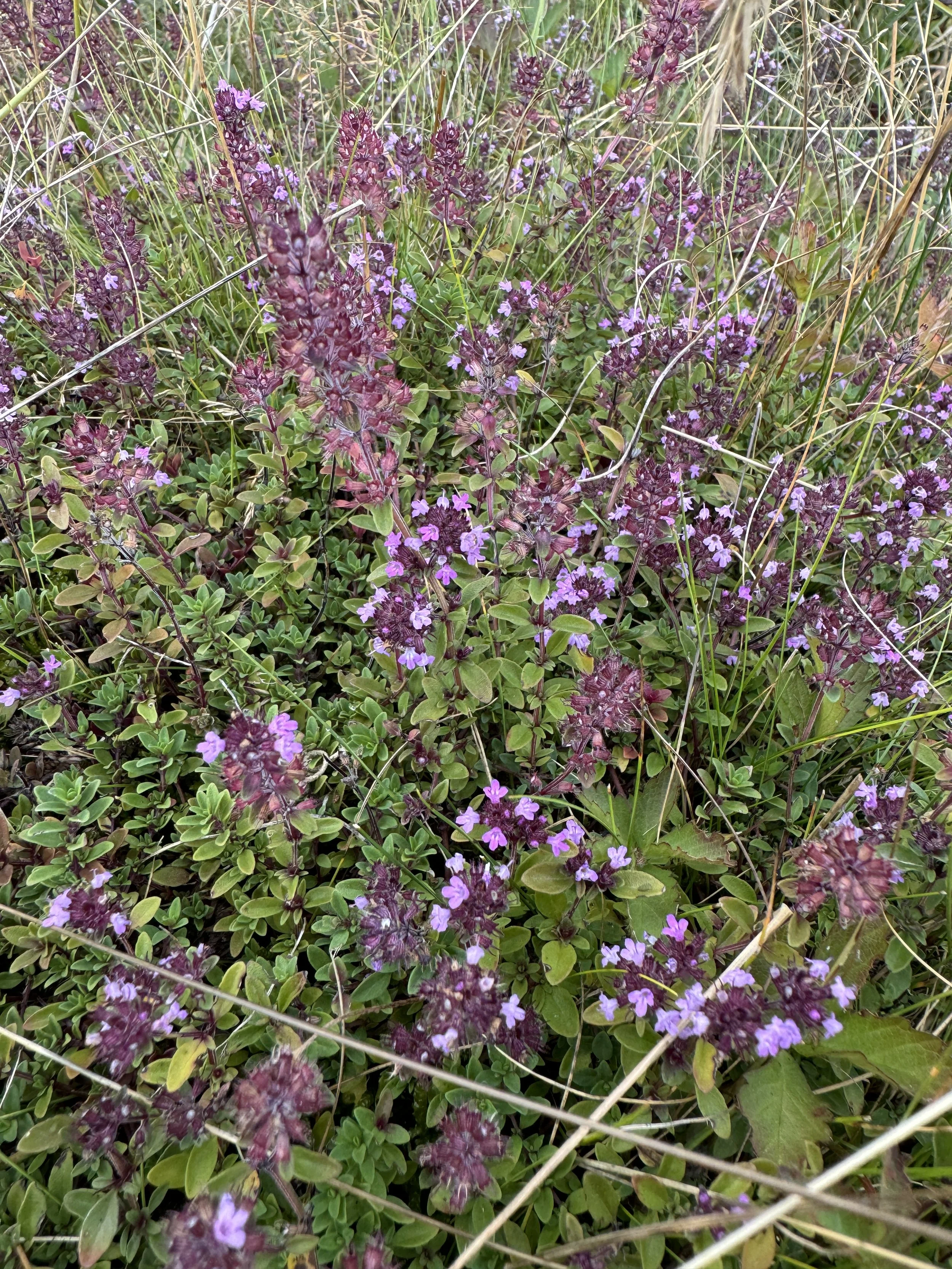Winners and losers
The Meadowlands used to be a sheep farm. We’re trying to create something more diverse by switching to very light year-round cattle grazing. We think this will be to the benefit of most species. Grassland flowers need to be left ungrazed long enough to flower and set seed. Insects tend to prefer a longer sward of of more varied height, with flowers for forage and vegetation to lay eggs on. Birds tend to prefer taller hedgerows, more seedheads, and scrubbier areas.
So far so good, but there must be species that did prefer the regularly cut and/or tightly grazed grassland?
One of our areas of species-rich grassland is filled with anthills, and in summer 2023 when we arrived, they were covered in Large Thyme Thymus pulegioides. It’s a beautiful colour, smells amazing when you rub your hands through, and the flowers looked great on the anthills. This year however, I’ve only found one small patch (see below) - is this the first casualty of our change in management?
Anthill covered in Large Thyme
We’re trying to manage this field as a meadow, but we can’t cut the field for hay as it is covered in anthills,. Instead we’re grazing down the long grass at the end of summer, which is sometimes called fogage or standing hay. We exclude grazing March-July so plants can flower and set seed, and then graze outside of this period with cattle.
I asked Stuart Hedley about the decline, and he suggested cattle are more likely to pull at plants than sheep which tend to nibble the top, so it is possible that the plant has been uprooted by the cows. But given Large Thyme is a perennial that spread via rhyzomes, it seems unlikely they could almost entirely remove it in one year.
Doing my own research, an old paper suggested Large Thyme is “benefited by grazing, especially close cropping by sheep and rabbits for this may eliminate dwarf ericaceous shrubs and greatly reduces the competitive power of grasses, thus creating a short turf.” (Piggot, 1955). The article also suggests a high phenol content in the plant leaves it untouched by sheep. So perhaps cattle grazing means it is getting outcompeted and physically removed?
Hopefully it bounces back next year and there is some other explanation, but if not we’ll have to decide whether to make a management change. We don’t want to start managing the site for a single species, so if everything else is going in the right direction we may have to accept there will be both winners and losers with a change in management. Or, if we decide it’s an unacceptable loss, we will make a change. But for now we’re just going to sit on our hands and monitor.
Close up of Large Thyme
References
Piggot, C. D. 1955. Thymus L. Journal of Ecology. 43(1), pp. 365-387.

